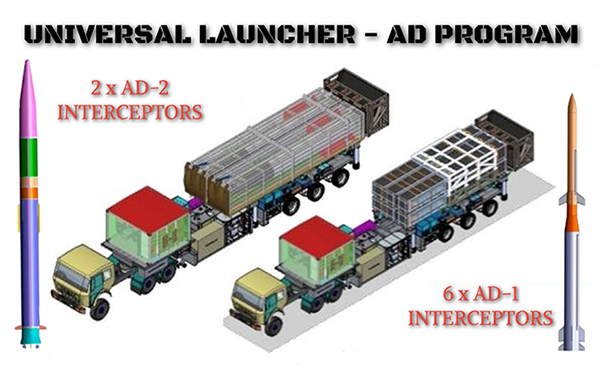India, on 2 November, tested a new interceptor missile for Phase-II of its indigenous two-tier ballistic missile defence (BMD) system, which is capable of intercepting incoming long-range nuclear missiles as well as slow-moving aircraft.
Development of Phase-I of the two-tier BMD, which is designed to track and destroy nuclear missiles both inside (endo) and outside (exo) the earth’s atmosphere at altitudes from 15-25 km to 80-100 km for “a higher kill probability”, was completed by DRDO some time ago.
The government, however, has so far refrained from sanctioning its full-scale operational deployment at any vital location, sources said. This could be due to the high costs involved, or even strategic calculations that it may provoke Pakistan to go in for a larger nuclear arsenal and countermeasures to defeat the BMD system.
India, of course, has inducted the Russian S-400 Triumf surface-to-air missile systems that can detect, track and destroy incoming strategic bombers, jets, spy planes, drones and even some intermediate-range ballistic missiles.
DRDO, on its part, is going ahead in developing the requisite technologies for a full-fledged BMD system. As per the original plan, Phase-I of the BMD system, with interceptors flying at 4.5 Mach supersonic speeds to intercept enemy missiles, was meant to tackle hostile missiles with a 2,000-km strike range. The Phase-II, in turn, is supposed to take on the 5,000-km range class of missiles.
On 2 November, the new interceptor missile called AD-1, with “a large kill altitude” was successfully tested against “an electronic target” from the APJ Abdul Kalam Island off the Odisha coast. The flight-test was carried out with elements of the BMD system being placed at different geographical locations.
“The AD-1 is a long-range interceptor missile designed for both low exo-atmospheric and endo-atmospheric interception of long-range ballistic missiles as well as aircraft (like AWACS or airborne warning and control systems),” the defence ministry said.
Propelled by a two-stage solid motor, the AD-1 is equipped with indigenously-developed advanced control systems, navigation and guidance algorithms to precisely guide the vehicle to the target.
Defence minister Rajnath Singh said AD-1 “is a unique type of interceptor with advanced technologies available with only a very few nations in the world”, while expressing confidence that it will further strengthen the country’s BMD capability and take it to the next level.
DRDO chairman Samir V Kamat, in turn, said the AD-1 interceptor will provide “great operational flexibility to the users and has the capability to engage many different types of targets”.
Only a few countries like the US, Russia, Israel and China have fully-operational BMD systems, with an overlapping network of early-warning and tracking sensors, reliable command and control posts, land and sea-based batteries of advanced interceptor missiles.
India’s BMD programme has been in the works since the late-1990s, with its first interceptor missile being tested in November 2006. Having conducted over a dozen tests of the BMD system since then, a few of which have failed, DRDO in the past has said that it has a “kill probability of 99.8%” with the mix of exo and endo-interceptor missiles. AD-1 is a new and flexible endo-interceptor missile.


















